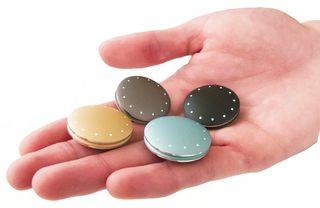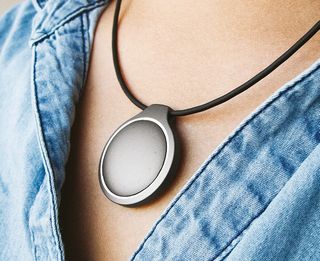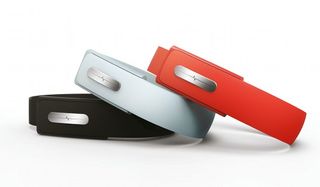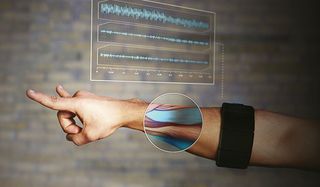What's the future for wearable tech?
R/GA London's Anthony Baker explores the design challenges that wearable technology poses.

Wearable technology has rapidly evolved in the past couple of years. but since the start of 2014 in particular, there's been more interest than ever before. CES, Mobile World congress and SXSW Interactive have exposed vibrant innovations in smart, wearable devices that are quickly transforming the way we interact, build and design digital experiences. Just take a look at wearable devices from a couple of years ago and you will realise how incredibly fast they are evolving.
Despite this fast-paced innovation, wearable devices are still in their infancy. Big brands as well as startups are still exploring possible usages, form factors and overall purpose – the last being key to success. In a world flooded with information and media channels, predictive, contextual and relevant information will supersede any fluffy functionality a device can offer. Designing experiences for wearable devices and soft circuits brings an entirely new challenge to the table.
A lot of this early work has begun at the wrist. Google has launched its new Android Wear platform - a framework targeting wearable devices - and Motorola has already announced the Moto 360, a circular smart watch powered by Android Wear. Samsung has also released its new generation of wrist wearables, including its Gear Fit. Designers will need to start thinking about the effect of curved screens and new screen form factors.

But it can be difficult to formulate a compelling argument for the purpose of smart watches. Most wrist-worn devices capitalise on small benefits such as duplicating existing smartphone functions, but on a more accessible surface. However, wearable devices are starting to come in different forms, adapting to suit how and where we might wear them.
During SXSWi 2014, a number of manufacturers presented the next wave of smart devices. Bionym's Nymi is a new type of smart band that, besides the de facto activity tracking capabilities, measures the wearer's heartbeat, and even uses this to authenticate the owner. Biometric verification on wearable devices poses some interesting possibilities when considering ways to control other devices, and even how your home interacts with you.
Mighty Cast's Nex Band is a modular smart band device that enables users to customise modules based on their needs and interests. Misfit's Shine is another smart device that can be worn in different ways. The owner can use it as a clasp, a band or even as a necklace. Thalmic Labs' Myo armband measures electrical impulses in your forearm to detect your hand and arm movements.

Interestingly, the interfaces on these kinds of devices are minimal. They are based on simple visual feedback, generally using LED-based, minimalistic signals and a very straightforward method of communicating state and functions. Designers need to take a completely different approach in this case. Cutting down information to the vital pieces and communicating it though minimalistic interfaces is vital.
Get the Creative Bloq Newsletter
Daily design news, reviews, how-tos and more, as picked by the editors.
More and more designers will be faced with devices where the form factor, screen type and visual capabilities change radically. They must embrace this in order to jump ahead and design the next generation of user interfaces, working even closer with the software and hardware engineers that build them.
This year we have seen how smart devices are inspiring interesting developments in a variety of markets. The automotive industry is keen to leverage value through connected devices in cars. Linking your smartphone to the car dashboard was the first step, but now wearables are seen as an intrinsic part of the story. We now have key holder that can authenticate users and start the engine, better remote devices to control music playback and hands-free calling. Also presented at SXSWi were the Skully Helmets - smart motorcycle helmets designed to enhance the user's viewing capabilities through embedded sensors and cameras. Think of them as evolving variants of Google's Glass device.
On the other side there is the fashion industry; a truly disruptive force in the wearable and soft-circuit space. Fashion has been experimenting with smart fabrics and high-tech clothing for some time now, but fashion designers are starting to work closely with technology to enhance and radicalise the purpose of pieces of clothing. Designer Pauline van Dongen presented high-tech clothing designs that made use of embedded solar panels capable of charging smartphones and potentially other wearables. This is a space where digital designers face a completely different surface for digital wearable experiences.
The list goes on. Sensors are cheaper than ever, easier to connect and easier to put together. Frameworks are also consolidating communication protocols, making it much simpler to develop applications and connect them to smartphones, tablets and computers.
From smart connected devices that help parents raise their kids, to smart wearables that track your pulse, sleep patterns and even posture, innovative wearables are all around. We see all types of form factors, from necklaces to smart glasses, helmets, key holders and even rings. The possibilities are endless - we could have smart, connected sensors in pretty much anything you can imagine.
This is both a huge challenge and a huge opportunity for designers. Consider that some - if not most - devices won't even have screens. They might rely on simple LED lights, gestures, touch and pressure, or even sound to give feedback to users. Even if we still rely on smartphone and web applications to visualise and share data, personalise and authorise our devices, this will just be one part of the equation.

Smart devices like those made by Nest tackle the engineering challenge as well as the design challenge. Designers have gone through disruptive changes with the evolution of the screen form factor. The explosion of the mobile industry and increase in tablets forced us to think in terms of fluid layouts and proportional arrangement: the 'three screen' approach.
However, we are quickly realising that there aren't just three different screen sizes. Nowadays, screens come in all sizes and resolutions. Smartphones in particular come in myriad different sizes and pixel densities. The same goes for tablets, laptops, PCs and TVs.
Adaptive and responsive layouts fall short when trying to overcome this reality. Designers need to embrace this idea and tackle user interfaces with a holistic approach, thinking outside of the screen box. Screens will always be there, but chances are they will be a small part of user interfaces in the next generation of wearable and connected devices.
This article originally appeared in Computer Arts issue 227.

Thank you for reading 5 articles this month* Join now for unlimited access
Enjoy your first month for just £1 / $1 / €1
*Read 5 free articles per month without a subscription

Join now for unlimited access
Try first month for just £1 / $1 / €1
Rob is editorial, graphic design and publishing lead at Transport for London. He previously worked at Future Publishing over the course of several years, where he launched digital art magazine, ImagineFX; and edited graphic design magazine Computer Arts, as well as the Computer Arts Projects series, and was also editor of technology magazine, T3.
